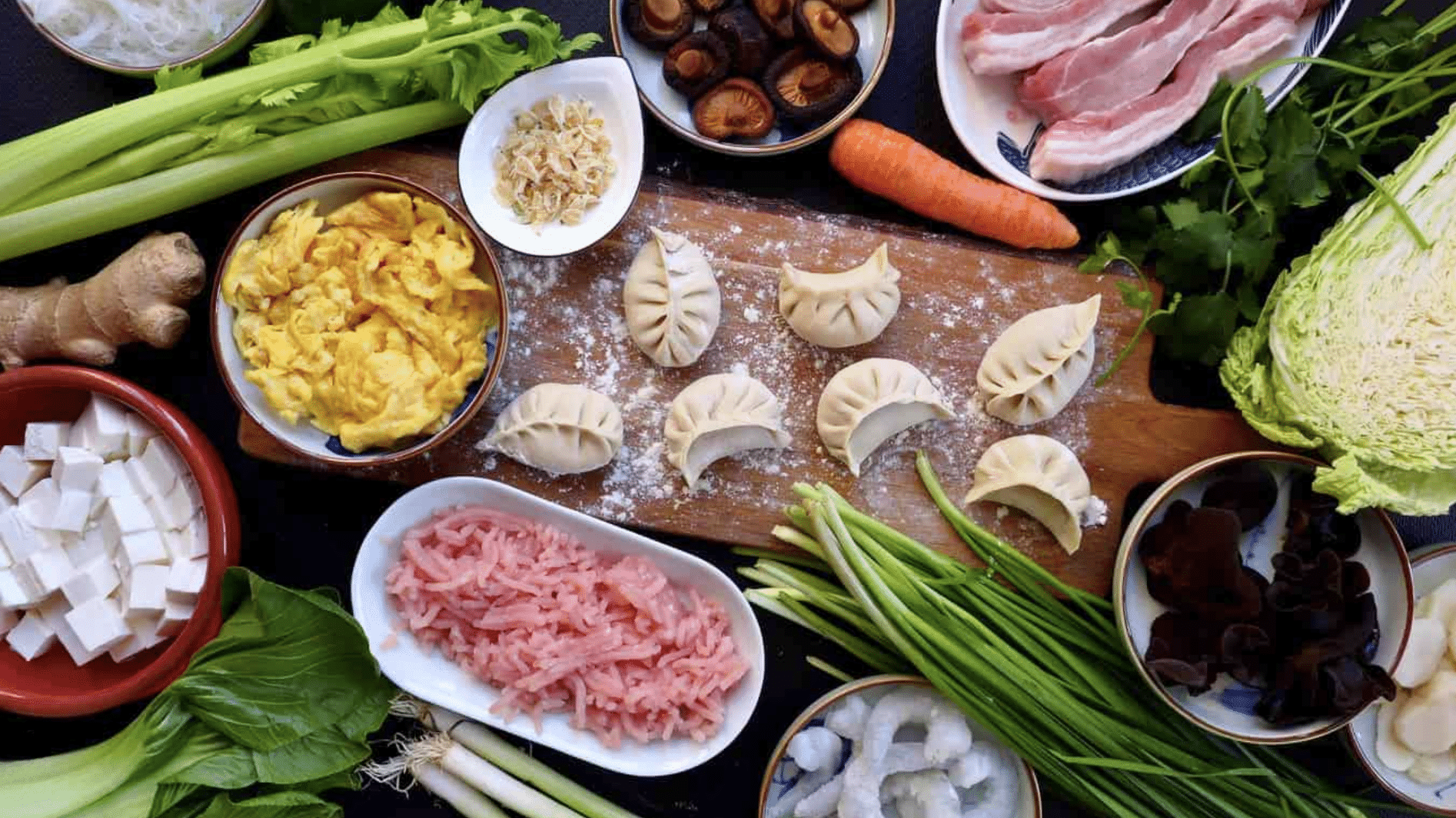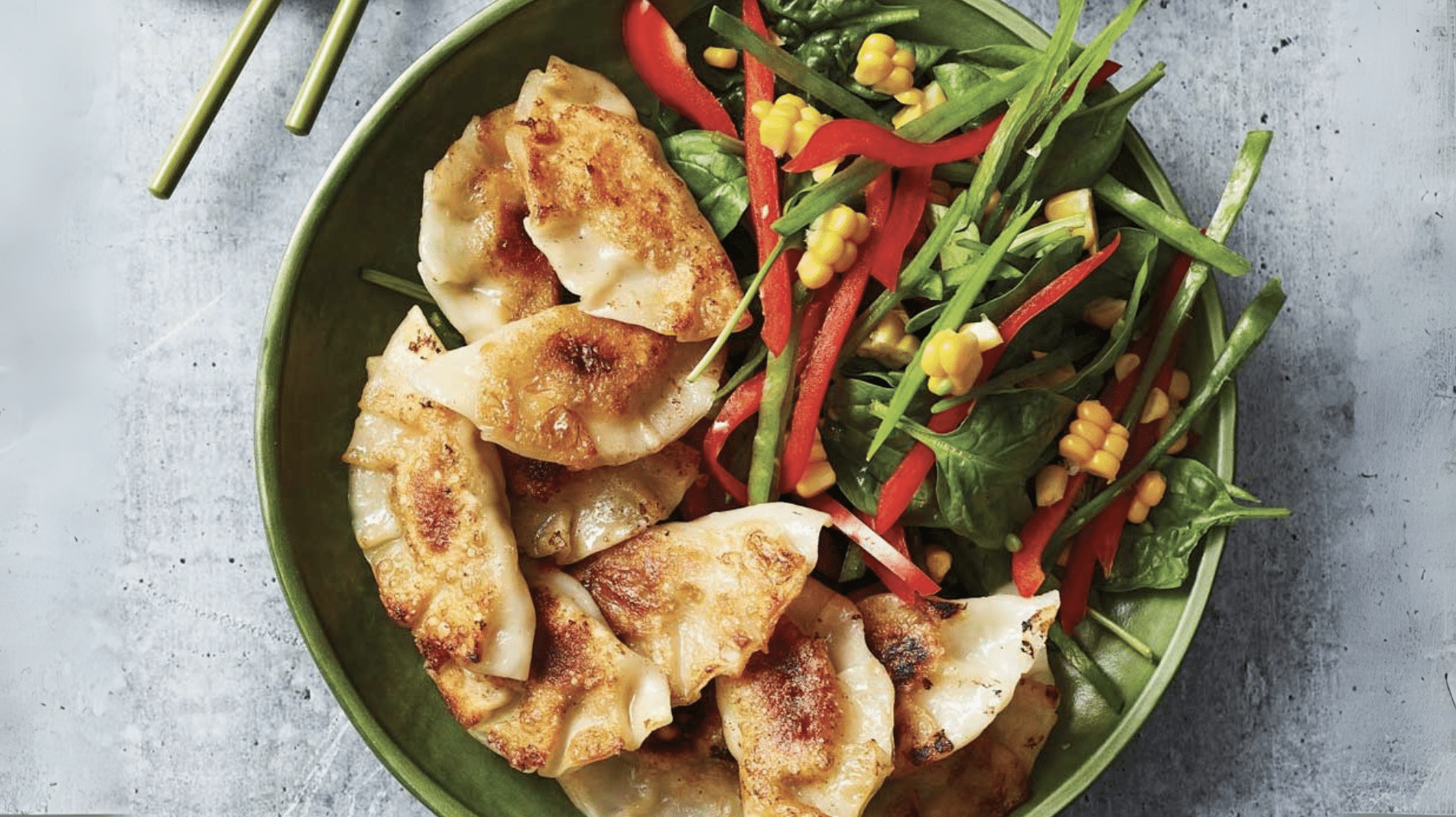I’ve always loved sitting down to a warm plate of dumplings. They’re quick, comforting, and come in a wide variety of flavors. But I also know the thought probably crossed your mind at some point: Are dumplings healthy?
That’s a fair question because the answer isn’t the same for every kind. It depends on what’s inside, how they’re cooked, and if they’re fresh or frozen.
In this blog, I’ll walk you through the key things that decide how healthy dumplings really are. You’ll see what makes some choices better than others and get simple tips for enjoying them without feeling guilty.
Are Dumplings Healthy?
Dumplings are made of two parts: the wrapper and the filling. The wrapper is mostly carbs, giving quick energy but not much nutrition. The filling adds the real value, protein from meat, tofu, or seafood, and vitamins and fiber from vegetables like cabbage or mushrooms.
Cooking also matters. Steamed or boiled dumplings are lighter, while fried ones take in extra oil. Portion size plays a role, too. A small serving can fit into a balanced meal, but a large tray can quickly add excess sodium, carbs, and calories.
Fresh vs. Frozen Dumplings
Both fresh and frozen dumplings can fit into your diet, but they differ in nutrition, sodium, and convenience. The table below highlights the main differences to help you compare:
| Feature | Fresh Dumplings | Frozen Dumplings |
|---|---|---|
| Ingredients | Fewer additives and preservatives | May include stabilizers and flavor enhancers |
| Sodium | Usually lower | Often higher |
| Nutrient Quality | Fresh vegetables and lean meats | Some nutrient loss during processing |
| Convenience | Best when made at home or bought fresh | Easy to store and quick to cook |
| Overall | Cleaner, more natural choice | Practical option, but check nutrition labels |
Quick takeaway: Fresh dumplings give you fewer additives and less sodium, while frozen dumplings are convenient but need careful label reading.
The Role of Fillings in Dumpling Nutrition

The filling is the biggest factor in how healthy dumplings are. Different choices can change the calorie count, protein levels, and even sodium content. Here’s a closer look at the role different fillings play in shaping the overall nutrition of dumplings:
- Vegetable fillings: Options like cabbage, chives, mushrooms, or carrots add fiber, vitamins, and minerals that support digestion and overall health. They also make dumplings lighter and lower in calories.
- Lean protein fillings: Chicken, shrimp, or tofu provide a solid source of protein with less saturated fat. These are good for building muscle and keeping meals satisfying without being too heavy.
- Meat-heavy fillings: Pork belly or beef dumplings are tasty but usually higher in calories and saturated fat. Eating these too often can raise cholesterol and add extra calories quickly.
- Highly seasoned fillings: Some dumplings are packed with sauces, salt, or flavor enhancers. This can raise sodium levels, which is a concern for people managing blood pressure.
Tip: A mix of lean protein and vegetables in your filling usually gives the best balance of flavor and nutrition.
Cooking Methods and Their Impact
Cooking style changes both the nutrition and the overall feel of dumplings. Some methods keep them light, while others add more fat and calories. Let’s break down how each cooking method can change the nutritional value and overall feel of dumplings:
| Method | Nutrition Impact | Key Notes |
|---|---|---|
| Boiled / Steamed | Lowest in fat, preserves nutrients | Lightest option, best for regular meals |
| Pan-Fried | Adds oil and calories | Crisp bottom, moderate choice between steamed and fried |
| Deep-Fried | Highest in fat and calories | Absorbs oil, very crunchy, best as an occasional treat |
| Air-Fried | Lower in fat than pan- or deep-frying | Crisp texture without heavy oil, a healthier middle ground |
Choosing the right cooking method makes a big difference. For everyday meals, steamed or boiled dumplings are the lightest, while fried versions are best enjoyed once in a while.
Dumplings as Part of a Balanced Meal

Dumplings can be filling on their own, but the wrapper is mainly carbohydrates, which means they often lack enough fiber and extra nutrients. The easiest way to make them part of a balanced plate is to add a few simple sides:
- A light soup such as miso, egg drop, or clear broth
- Steamed vegetables like bok choy, spinach, or broccoli
- A fresh salad for added fiber and crunch
By pairing dumplings with these extras, you balance out the carbs from the wrapper with protein, fiber, and vitamins, making your meal more complete and nourishing.
Community Opinions: What People Think
Dumplings spark plenty of discussion online, especially when it comes to health. Some people say they’re a smart choice if you control the portion and add sides like vegetables or soup.
Others focus on the convenience of frozen dumplings, noting they can still be part of a healthy diet if you read labels carefully and avoid deep-frying.
One user put it simply: “I love dumplings! If you’re concerned about it, try making the dumplings a part of the meal, not the meal. Meaning, add some veggies too. Steamed broccoli, sautéed carrots, or whatever else you like.”
If you’d like to read more perspectives and tips, you can check out this Reddit community discussion on dumplings and health.
Making Dumplings a Healthier Choice
With a few smart choices, dumplings can be both satisfying and nourishing.
- Choose fillings with vegetables and lean protein: Options like cabbage, mushrooms, shrimp, chicken, or tofu provide fiber and protein without too much fat.
- Opt for steaming or boiling rather than frying: These methods are lighter and keep more nutrients, while frying adds extra oil and calories.
- Use light sauces such as vinegar or low-sodium soy: Traditional sauces can be very salty, so swap them for vinegar, garlic, or a splash of sesame oil.
- Keep a serving of around 10–12 dumplings for a balanced meal: Pair them with soup or steamed greens for extra fiber and vitamins.
Small adjustments like these let you enjoy dumplings while keeping your meals balanced.
Final Thoughts
So, are dumplings healthy?
Fresh dumplings with vegetables or lean protein are usually lighter and more balanced. Frozen dumplings can be a good option too, as long as you check the label and watch the sodium.
For me, dumplings are flexible. I like pairing them with soup, steamed vegetables, or a small salad. It makes the meal more balanced while still giving that warm, comforting feeling.
Healthy eating doesn’t have to be complicated; it’s about small, smart choices. If you found this useful, be sure to check out more of my posts for easy food tips and everyday meal ideas.





